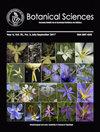路已走,路在前:新千年墨西哥民族植物学的巩固。一篇文章
IF 0.7
4区 生物学
Q3 PLANT SCIENCES
引用次数: 4
摘要
这项工作考察了民族植物学的发展,重点关注本世纪的墨西哥。这门学科是如何发展起来的?西班牙语的相对重要性是什么?是否存在拐点?一些选定的领域是如何发展的,为什么?数字增长主要通过谷歌学者查询进行分析。其他受试者根据作者的文献和经验进行治疗。西班牙语仍然很重要,尤其是在墨西哥。由于20世纪90年代的社会背景、几部基础著作的出版、方法学的进步以及墨西哥科学的特殊性,该学科从2000年起获得了发展势头。民族植物学的发展轨迹与库恩提出的科学周期性进步的模型一致:在最初的定义阶段之后,首先是描述性研究的综合,然后是快速发展,最近显著转向了理论和框架构建。从三个方面(药用植物、农业和野生生长资源)讨论了取得进展的原因。一般利益、资金筹措、研究小组的合并和机构的内部组织都发挥了作用。我们强调重要的开放性问题。民族植物学正从一个描述阶段走向一个分析阶段。然而,仔细的描述性研究仍然很有价值,因为信息来源正在减少,理论需要经验基础。此外,民族植物学鼓励知识和生物文化记忆的传播。它是综合可持续性科学的一个关键要素。本文章由计算机程序翻译,如有差异,请以英文原文为准。
Roads traveled and roads ahead: the consolidation of Mexican ethnobotany in the new millennium. An essay
This work examines the development of ethnobotany, focusing on Mexico in this millennium. How has the discipline grown? What is the relative importance of Spanish? Are there inflection points? How did some select areas develop, and why? Numerical growth was analyzed mainly through Google Scholar queries. Other subjects were treated based on literature and experience of the authors. Spanish continues to be relevant, especially in Mexico. The discipline gained momentum from 2000 onwards because of the social context of the 1990s, the publication of several foundational works, methodological advances, and particularities of Mexican science. The trajectory of ethnobotany is congruent with a model derived from Kuhn’s proposal of cyclical advancement of science: an initial defining stage was followed by a first synthesis, then fast growth of descriptive studies, with a notable recent turn to theory and framework construction. The causes for advances are discussed for three areas (medicinal plants, agriculture, and wild-growing resources). General interest, financing, the consolidation of research groups and the internal organization of institutions have played a role. We highlight important open questions. Ethnobotany is maturing from a descriptive to an analytical stage. However, careful descriptive studies continue to be valuable because the sources of information are in decline, and theory needs an empirical basis. Also, ethnobotany encourages the transmission of knowledge and biocultural memory. It is a key element for integrated sustainability science.
求助全文
通过发布文献求助,成功后即可免费获取论文全文。
去求助
来源期刊

Botanical Sciences
Agricultural and Biological Sciences-Plant Science
CiteScore
1.90
自引率
21.40%
发文量
71
审稿时长
16 weeks
期刊介绍:
Botanical Sciences welcomes contributions that present original, previously unpublished results in Botany, including disciplines such as ecology and evolution, structure and function, systematics and taxonomy, in addition to other areas related to the study of plants. Research reviews are also accepted if they summarize recent advances in a subject, discipline, area, or developmental trend of botany; these should include an analytical, critical, and interpretative approach to a specific topic. Acceptance for reviews will be evaluated first by the Review Editor. Opinion Notes and Book Reviews are also published as long as a relevant contribution in the study of Botany is explained and supported.
 求助内容:
求助内容: 应助结果提醒方式:
应助结果提醒方式:


